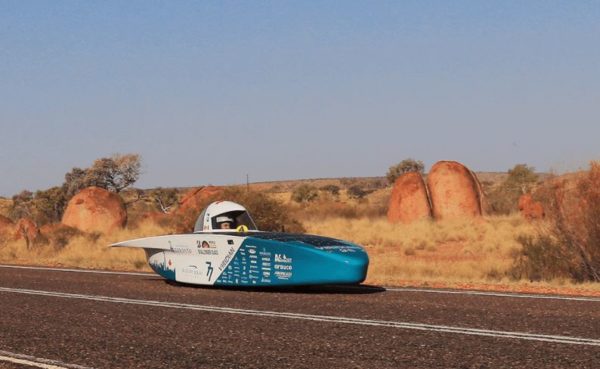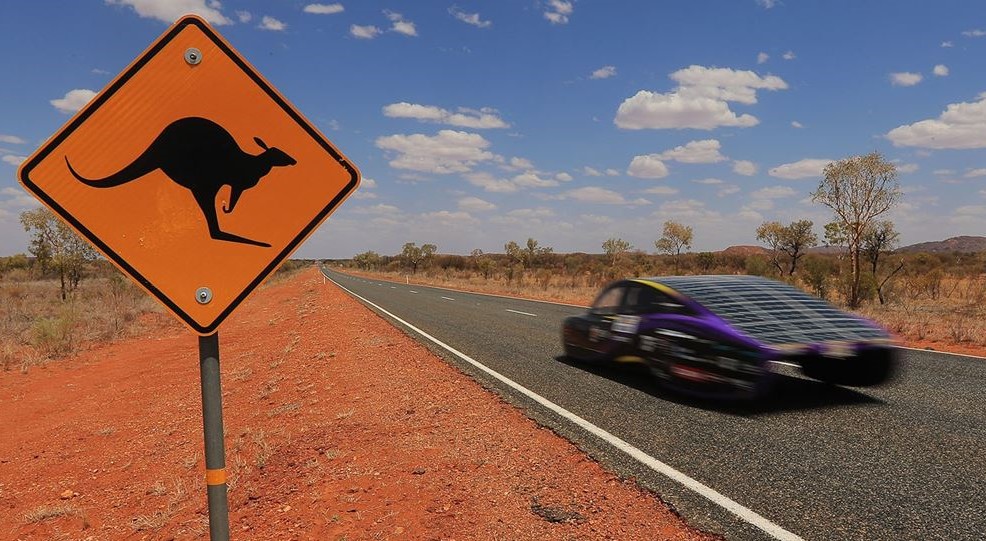Student teams from around the globe will be looking to push the limits of technological innovation and modern engineering in search of success after organisers of the World Solar Challenge announced the event, which requires participants to design, build and race solar-powered cars 3,000 kilometres from the Northern Territory to South Australia, will return to the calendar next year.
The 16th staging of the biennial event will be held from 20-27 October 2023. It will mark a return for the race after the 2021 event was cancelled amid international border closures sparked by the Covid-19 pandemic.
First contested in 1987, the World Solar Challenge is exclusive to vehicles powered only by solar energy. Participants are required to engineer, manufacture and race a solar-powered car from Darwin to Adelaide, a 3,000km journey along the Stuart Highway which snakes its way through the harsh Australian outback.
Each of the solar-powered cars will be engineered, built and driven by teams from schools and universities across the globe.
“Crossing a continent on the power of the sun really is the ultimate adventure,” World Solar Challenge event director Chris Selwood said.
Selwood said the race continues to exceed expectations with the best of the solar vehicles capable of covering distances of up to 1,200km without charging from the grid.
“That’s superior to most electric vehicles (EV) on the market today,” he said, adding that each staging of the event raises the bar with the regulations made increasingly difficult.
For the 2019 event, each participating team had to create a car using no more than six square metres of solar panels and were only allowed up to 5kW hours of stored energy.
The regulations for the 2023 event are expected to be released next month, with event registration to open in June.

Image: BWSC
The event features two main categories: The Challenger Class and Cruiser Class. The Challenger Class uses only the sun for power and vies for outright victory, while the Cruiser Class brings green technology to the mainstream and can charge from the grid on two occasions – highlighting the relevance to EV development.
Taka Horio, director of motorsport with event sponsor Bridgestone, said the World Solar Challenge provides a great chance for participating teams to develop and showcase solutions that can help improve the future of sustainable mobility.
“The event provides an invaluable opportunity,” he said. “The Bridgestone World Solar Challenge leads to enhancement of technologies, innovation and solutions that tackle social and environmental issues.”
The 2019 event, which attracted a record 43 teams from 21 countries, was won by the Agoria Solar Team.
The Belgian team’s BluePoint car clocked an average speed of 86.6km per hour to cross the line first ahead of a team from Japan’s Tokai University (86.1kmh) with the team from the United States’ University of Michigan (79.6kmh) third.
This content is protected by copyright and may not be reused. If you want to cooperate with us and would like to reuse some of our content, please contact: editors@pv-magazine.com.









By submitting this form you agree to pv magazine using your data for the purposes of publishing your comment.
Your personal data will only be disclosed or otherwise transmitted to third parties for the purposes of spam filtering or if this is necessary for technical maintenance of the website. Any other transfer to third parties will not take place unless this is justified on the basis of applicable data protection regulations or if pv magazine is legally obliged to do so.
You may revoke this consent at any time with effect for the future, in which case your personal data will be deleted immediately. Otherwise, your data will be deleted if pv magazine has processed your request or the purpose of data storage is fulfilled.
Further information on data privacy can be found in our Data Protection Policy.